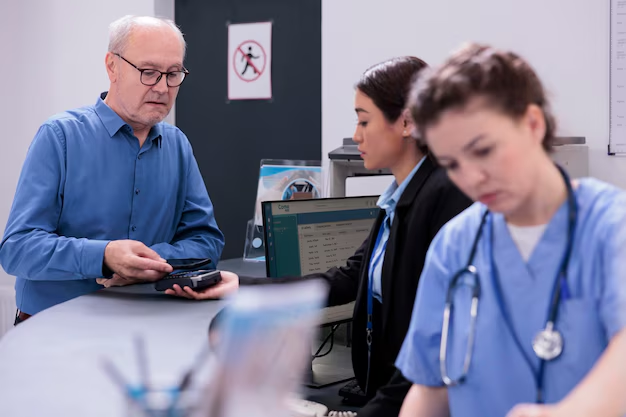Cardiac Licensed Practical Nurse Career Guide | Education, Salary, and Career Outlook
As healthcare technology continues to evolve, the demand for specialized nursing roles grows exponentially. One such critical area is cardiac nursing, where professionals like Cardiac Licensed Practical Nurses (LPNs) play vital roles. These specialists provide essential care to patients with heart conditions, making a significant impact on their healthcare journeys.
Cardiac Licensed Practical Nurses are integral members of the healthcare team, working closely with cardiologists and registered nurses to monitor and manage heart health. They provide bedside care, administer medication, and educate patients and their families on managing cardiac conditions. The appeal of this career lies not only in its impact but also in its dynamic nature, offering hands-on experience, personal interaction, and continuous learning opportunities.
Education and Training
High School Preparation
Aspiring Cardiac Licensed Practical Nurses should begin their journey with a strong foundation in science and mathematics during high school. Courses in biology, chemistry, and health sciences can provide valuable preparatory knowledge. Participation in high school health clubs or volunteer opportunities at local hospitals can also be beneficial.
Required Degrees or Certifications
To become a Cardiac Licensed Practical Nurse, a high school diploma or equivalent is essential, followed by enrollment in an accredited LPN program, typically offered by community colleges and technical schools. These programs usually last about 12-14 months and cover core nursing skills and patient care theories.
Specialized Training Programs
Specialization in cardiac nursing often requires additional certifications focused on aspects of cardiac care. Post-LPN certification courses are available through professional organizations or as part of ongoing education programs offered by employers.
Licensing and Board Exams
Upon completing an LPN program, candidates must pass the National Council Licensure Examination for Practical Nurses (NCLEX-PN) to obtain their practicing license. Each state may have additional requirements, so it's essential to check local regulations.
Continuing Education
Cardiac LPNs are encouraged to engage in continuing education to stay current with medical advancements and technology. Many employers offer training seminars or support nurses in obtaining advanced certifications in cardiac care.
Summary Table: Education and Training Pathway
| Stage | Requirements |
|---|---|
| High School Preparation | Biology, Chemistry, Health Sciences |
| LPN Program | 12-14 month program |
| Licensing | Pass NCLEX-PN |
| Specialization | Additional certifications in cardiac care |
| Continuing Education | Ongoing sessions and seminars |
Skills and Qualities Needed
Cardiac Licensed Practical Nurses need a blend of hard and soft skills to succeed. Hard skills include clinical competencies such as ECG monitoring, medication administration, and patient assessment. These skills are critical, as nurses need to swiftly interpret data and act decisively in emergencies.
Equally important are soft skills like communication, empathy, and patience. LPNs often work with vulnerable patients who require clear explanations and emotional support. For example, providing reassurance to a heart attack patient or helping them understand their recovery plan are crucial responsibilities.
Salary
The financial rewards of being a Cardiac Licensed Practical Nurse are appealing. According to the U.S. Bureau of Labor Statistics, the median annual wage for LPNs was approximately $48,070 as of 2020. However, those specializing in cardiac care can expect to be on the higher end of the spectrum due to their specialized skills.
Salary Table: National Averages by Career Stage
| Career Stage | Salary Range |
|---|---|
| Entry-Level | $41,000 - $47,000 |
| Mid-Career | $47,000 - $56,000 |
| Experienced | $56,000 - $65,000 |
Salary can vary significantly based on location, education level, and specialization. Nurses in metropolitan areas or those with advanced certifications typically earn more.
Career Outlook and Job Help
Job Growth Data
The demand for nurses is expected to grow, with LPN roles seeing a stable increase. Factors such as an aging population and a rise in chronic heart conditions ensure that cardiac specialists remain in high demand. The Bureau of Labor Statistics anticipates a growth rate for LPNs of around 9% from 2020 to 2030.
Common Employment Settings
Cardiac LPNs can find opportunities in various settings, including hospitals, cardiac rehabilitation centers, and specialty clinics. Some may also work in home healthcare, offering personalized care to patients recovering from cardiac surgeries.
Career Advancement Opportunities
Cardiac LPNs can expand their careers by pursuing further education to become Registered Nurses (RNs) or obtaining certifications like the Certified Cardiac Care Nurse (CCCN). Leadership roles, such as unit supervisors or healthcare administrators, are also possible avenues with experience.
Tips for Job Seekers
For job seekers, crafting a resume that highlights relevant skills and experiences is critical. Networking with healthcare professionals and joining cardiac nursing associations can open doors to job opportunities and mentorship. Keeping certifications updated and attending industry conferences can also enhance one's career prospects.
Final Insights
Pursuing a career as a Cardiac Licensed Practical Nurse is rewarding both professionally and personally. These nurses are vital to patient recovery and long-term health management, offering a fulfilling path for those passionate about cardiac care. The ever-evolving nature of healthcare ensures that nurses in this field will experience continual learning and professional growth.
For students considering this role, the journey begins with a dedication to education and a passion for patient care. Embrace the endless opportunities for advancement, and let the positive impact on patients' lives be your motivation. Cardiac nursing is not just a career; it's a commitment to inspiring hope and healing.

Related Articles
- Download Your Free Ebook on Becoming a Cardiac Nurse Anesthetist—Education, Career Pathways, and Salary Insights Await!
- Download Your Free Ebook: Become a Cardiac Nurse Midwife – Education, Career Paths, and Salary Insights!
- Fast-Track Your Cardiac Nursing Career: Download the Free Ebook on Becoming a Clinical Nurse Specialist Today!